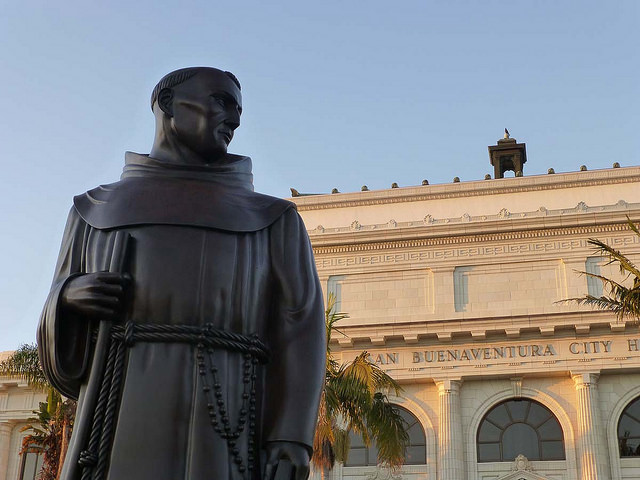Savior Or Villain? The Complicated Story Of Pope Francis’ Next American Saint

*This has been a sore spot among many U.S. Latinos since the announcement of the canonization last January. The Pope will celebrate the special mass in Spanish in two weeks. VL
By Shereen Marisol Meraji, NPR Code Switch
When Pope Francis travels to the U.S. later this month, he’ll give 18th-century Spanish priest Junipero Serra the Catholic Church’s highest honor: sainthood. But for many Native Americans in California, sainthood for Father Serra isn’t a slam dunk.
[pullquote]”People were enslaved in the missions,” says Vincent Medina, 28, assistant museum director at San Francisco’s famed Mission Dolores. “They were whipped if they spoke their language. If they tried to escape, they were forcibly brought back, flogged and punished, and kept in stocks. People were getting diseases. They were horrible places to be.”[/pullquote]In the late 1700s, Serra helped Spain colonize California by converting tens of thousands of Native Americans to Catholicism. For many of their descendants, he’s the man responsible for destroying their ancestors’ traditional way of life.
Serra arrived in San Diego in 1769, charged by the Catholic Church with “Christianizing” and “hispanicizing” the native population on behalf of the Spanish crown. He did that within the mission system: self-contained residential complexes where Indians would live, work and worship under the authority of Spanish priests and soldiers. Serra founded nine missions along the coast of California before his death in 1784. Twelve more were erected after his death.
Locals ended up in the missions for a number of reasons. Many came looking for food; the Spanish colonizers brought with them nonnative animals that ate plants and berries crucial to the ecosystem that Native Americans depended on, leaving starvation in their wake. The priests were known to lure people into the mission with gifts. Young men from neighboring areas were also rounded up by Spanish soldiers for agricultural and construction work. However people arrived, they were invariably forced to stay in the missions and adopt Spanish ways of life, stripped of their tribal languages and cultural identities and gradually known as “Mission Indians.”
Click HERE to read the full story.
[Photo by marianne muegenburg cothern/Flickr]

